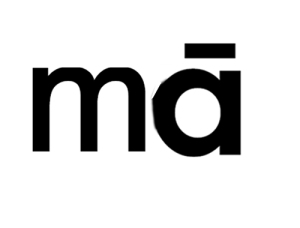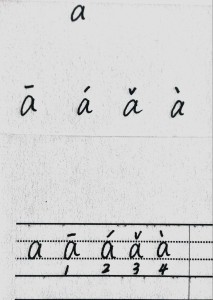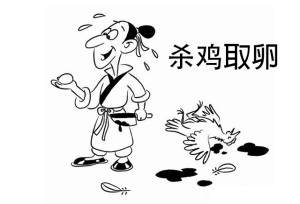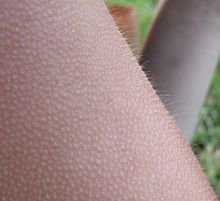We are busy preparing new materials, stay tuned.
Initial-m
Congratulations! Since you have finished the first sound of Mandarin Chinese! If you jumped the gun or loaded on this page accidentally, please go back to the first sound [a].
The reason I want you to learn well [a] is that we will use it frequently in this lesson. Today, we are going to learn [m]. These two sounds are initials(consonantes). So when you combine a initial with a final, you pronounce a word!
Just like a lot of babies who speak their first words as Ma (mother/father), today we will learn how to say mother in Chinese.
I like this one. Because as a Chinese, I always have difficulty pronouncing the counterpart of it in English. Hopefully, you will do it very in Chinese.
Now let us combine m and a. Listen and repeat:
Vowels – a
Today we learn the first alphabet, it’s also the first vowels. Interestingly, both Mandarin Chinese and English have this sound. But they are somehow very different. The most conspicuous one is that there are 4 tones in Chinese while the same vowel has several sounds in English.
Before we dive into 4 tones. Let’s just practice how to pronounce the a sound, just like the a in father.
Now you have heard the sound, please write it on a sheet of paper or you can download this Exercise Sheet. Write it and repeat the sound.

Now let’s move on to the 4 tones of a. Please listen to them and see if there are similar sounds in your own language. The sounds are played in order.
Here is an example of hand writing of initial a:
Savy for a rainy day-未雨绸缪
未雨绸缪-wèi yǔ chóu móu
save for a rainy day
Random Word- 顿悟(epiphany)
顿悟 (dùn wù):epiphany
解释:
- 突然明白,醒悟。When you suddenly feel that you understand, or suddenly become conscious of, something that is very important to you(Cambridge Dictionary)
- 佛教禅宗用语。通过正确的方法和途径,迅速的领悟佛法。Buddhist term. You understand powerful religious experience by using the correct methods.
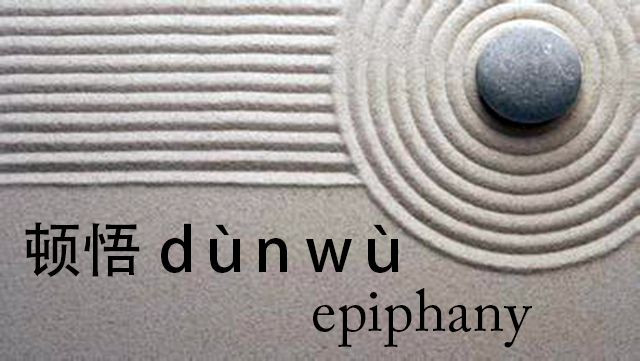
Goose or hen That’s the problem
Goose or hen That’s the problem
There is an interesting part between English and Chinese. They both use the Goose or hen to express some ideas, however Goose used in English will become hen in Chinese context!! Here are two examples:
1.杀鸡取卵 literally means to kill a hen and get her eggs
In English it should be:
To kill the goose that lay golden eggs.
What? In Chinese we use hen while the counterpart in English is goose.
Another example:
Goose bumps(via Wikipedia)
Goose bumps, goose pimples or goose flesh, the medical term cutis anserina, are the bumps on a person’s skin at the base of body hairs which may involuntarily develop when a person is cold or experiences strong emotions such as fear, nostalgia, pleasure, euphoria, awe, admiration, andsexual arousal.[1]
You know what?
Here in Chinese we use hen again! The natural way to express this is:鸡皮疙瘩。
Do you have any clue why this happened?
Tense in English and Chinese 英汉时态
Tense( 时态)
For native Chinese, tenses in English are hard nuts to crack. We can’t help thinking that why you guys use so many tenses. Actually we use as many tenses as you do, but we don’t change the forms of verb, instead we use other methods to convey the same meaning.
Unlike English which has 5 forms(Basic,-s,past tense, past participle and -ing), Chinese verbs don’t change at all. We use adverbs to indicate the tense. Let’s take present simple and present continuous as examples to illustrate the point.
In English, we use present simple to describe things that are generally true, or happens on a regular basis such as a habit or a hobby. While we use present continuous to describe the things that happens as the time of speaking. The basic forms of two tenses: do/be doing.
- I am reading a book on Technology.
- I read a while every night before I go to sleep.
In Chinese, the main verb remains the same.
- 我正在看一本科技书。
- 我每晚入睡前都看一会书。(我每天晚上都看一会书再睡觉。)
As you see, the main verb 看changes nothing at all. Instead we add 正在 to indicate the present continuous while we use (每晚)very night to indicate the present simple.
For each tense, we will cover in the following post.
word order
Word order (词序)is important in Chinese. With the same words, if you put them in different orders, you convey totally different meanings. Here are some examples.
Example 1:
1. 我喜欢她。I like her, but she may not like me. -:(
2. 她喜欢我。 She likes me, but … you know.
Example 2:
1. 他跳上桌子。He jumped onto the table. This sentence emphasize the action that he jumped onto the table. I use past simple to indicate that the action has been done.
2.他在座子上跳。He is dancing on the table. This sentence has a total different structure, you will learn more in ensuing chapters.
Rule No.1: Always pay attention to the word order.
Summary of Pinyin
It’s fascinating but not surprising to know that Pinyin hasn’t been available until romanization systems has been adopted in the 19th century. Wade Giles is the most prominent one and is widely adopted by the western countries.
The official Pinyin for Mainland China has been unveiled in 1958. The basic rules of Chinese phonetic alphabet orthography was first released in 1996 and revised in 2012. What we are going to learn conforms to this rule.
In the following days, we are going to learn the basic rules. Hopefully you will enjoy it and get the hang of it as quickly as possible!
Stay tuned!
